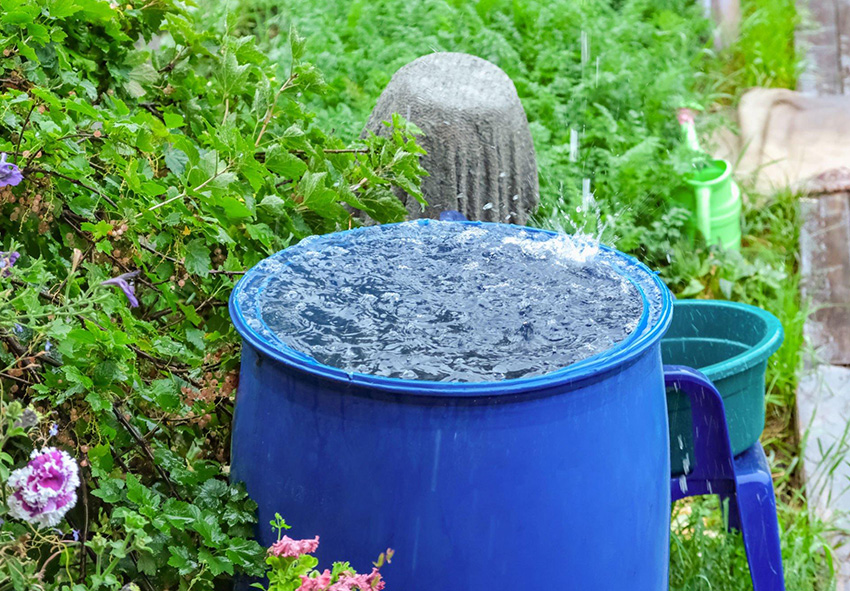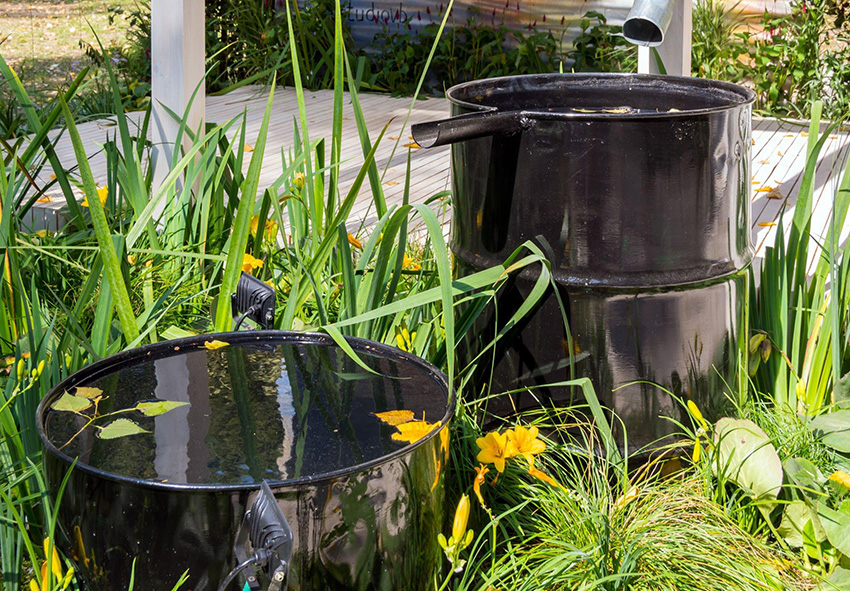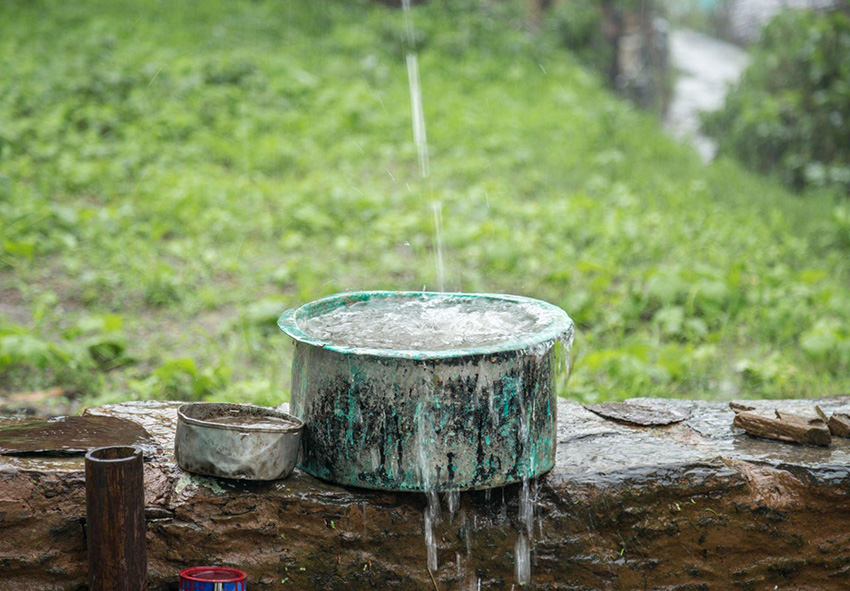Rainwater harvesting is the process of collecting rainwater and storing it for future use. It has become increasingly popular in recent years as a sustainable and cost-effective way to conserve water. In this beginner’s guide, we will discuss why rainwater harvesting is important, how it works, and how to get started with rainwater harvesting at home.
Why Harvest Rainwater?

Rainwater harvesting has various environmental and financial advantages.
Harvesting rainwater can help to minimize your reliance on municipal or groundwater sources, thereby conserving these resources for future generations. You may minimize your water bills and save money by collecting and using rainwater for activities such as gardening or cleaning.
You can limit the amount of runoff that causes erosion and flooding in your neighborhood by collecting rainwater. Rainwater is frequently better for plants than tap water since it is free of pollutants that might harm plants, such as chlorine. You may contribute to a more sustainable lifestyle and lower your carbon footprint by lowering your reliance on water from outside sources.
Overall, rainwater collecting can provide a sustainable and cost-effective solution for meeting your water needs while also assisting in the conservation of natural resources and environmental protection.
How Rainwater Harvesting Works
Rainwater harvesting is the practice of collecting and storing rainwater for later use. The collected rainwater can be used for a variety of purposes, such as irrigation, landscaping, washing clothes, flushing toilets, and even drinking in some cases. Here is a brief overview of how rainwater harvesting works:
- The first step in rainwater harvesting is to collect rainwater from rooftops or other surfaces. Rainwater can be collected using gutters, downspouts, and other drainage systems.
- Once the rainwater is collected, it needs to be filtered to remove any debris, such as leaves and twigs. This can be done using a mesh screen or a simple filter.
- The filtered rainwater is then stored in tanks or other storage containers. The storage capacity should be determined based on the amount of rainfall in the area and the intended use of the collected water.
- The stored rainwater can then be distributed to where it is needed. This can be done using gravity or a pump, depending on the distance and elevation between the storage tank and the point of use.
Overall, rainwater harvesting is a sustainable and cost-effective way to conserve water and reduce the strain on municipal water supplies
Choosing a Rain Barrel
Choosing a rain barrel is influenced by a variety of criteria, including your budget, the size of your land, and the amount of rainfall in your location.
The size of the rain barrel will be determined by the amount of rainfall in your area as well as the size of your land. A 50-gallon rain barrel is plenty for most homes, but if you have a larger property or live in a rainy area, you may require a larger capacity.
Rain barrels are built from a variety of materials, including plastic, wood, and metal. Plastic rain barrels are the most common and least expensive, although they may not survive as long as other materials. Wooden rain barrels are more expensive, but they last longer and are more visually appealing. Metal rain barrels are similarly long-lasting, but they can rust and are more expensive.
Rain barrels come in a variety of shapes, including round and rectangular. The amount of water that may be held is affected by the shape, so choose one that fits your space and needs. Some rain barrels have extras such as a spigot or a filtration system. These features are useful, but they raise the price of the rain barrel.
Finally, the best rain barrel for you will be determined by your own demands and tastes. Consider all of these aspects before purchasing a rain barrel to guarantee that it will fit your needs and survive for many years.
Installing a Rain Barrel

Installing a rain barrel is a great way to conserve water and save money on your water bill. Here are some general steps to follow when installing a rain barrel:
- Select a location near a downspout that collects rainwater from your roof. Make sure the location is level and stable.
- Clear the area where you will place the rain barrel. Level the ground if necessary.
- A diverter is a device that connects your downspout to the rain barrel. It allows water to flow into the barrel when it’s raining and redirects water away from the barrel when it’s full. Follow the instructions that come with the diverter to install it.
- Place the rain barrel on a stable surface. Attach the spigot to the barrel using a washer and nut. Install the overflow hose near the top of the barrel to direct excess water away from your home’s foundation.
- Once the diverter is installed, connect the hose from the diverter to the top of the rain barrel. Make sure the hose is securely attached.
- Wait for the next rainstorm to test your rain barrel system. Make sure the water is flowing into the barrel and the overflow hose is working properly.
- Clean the debris from the top of the rain barrel periodically. Make sure the overflow hose is free of debris and the spigot is tightly closed.
Remember, installing a rain barrel can help you save water and money. Be sure to check your local regulations before installing a rain barrel, as some areas may have restrictions on their use.
Tips for Maintaining Your Rain Barrel
Rain barrels are an excellent method of collecting and storing water for your plants and yard. Debris and sediment can accumulate in your rain barrel over time. It is critical to clean it on a regular basis to avoid obstructions and maintain the water flowing smoothly. To clean the inside of the barrel, use a scrub brush or a hose.
By covering your rain barrel with a screen or mesh, you can keep trash, pests, and small animals out of the water. It can also help to minimize the quantity of sunlight entering the barrel, preventing algae formation. Check your rain barrel for leaks or cracks on a regular basis. If you discover any damage, make repairs as quickly as possible to avoid water loss.
It is critical to use the water in your rain barrel on a frequent basis to avoid stagnation and maintain the water fresh. You can use the water to water plants, wash your car, or participate in other outside activities. If you live in a cold climate, you should winterize your rain barrel to protect it from freezing temperatures. Remove the barrel from your downspout and store it in a safe place until spring.
Using Harvested Rainwater
Harvested rainwater is a valuable resource that can be used for a variety of purposes, including irrigation, watering gardens, flushing toilets, washing clothes and vehicles, and even for drinking if properly treated. Here are some tips for using harvested rainwater:
- Before using harvested rainwater for any purpose, it’s important to filter it to remove debris, dirt, and other contaminants. You can use a simple mesh filter or a more sophisticated filtration system to achieve this.
- You will need to store harvested rainwater in tanks or barrels for later use. Make sure the storage containers are clean and properly sealed to prevent contamination.
- When using harvested rainwater, be mindful of the amount you use and try to conserve as much as possible. Use a drip irrigation system to water your plants and avoid over-watering them.
- If you plan to use harvested rainwater for drinking or cooking, it’s important to treat the water properly to ensure it’s safe to consume. Boiling, chlorination, and ultraviolet treatment are some effective methods for treating rainwater.
Overall, using harvested rainwater can be an effective way to conserve water and reduce your reliance on municipal water sources. With proper filtration and treatment, it can be used for a variety of purposes, making it a valuable resource for any homeowner or gardener.
Overcoming Common Challenges

Rainwater harvesting has gained popularity over the years as a sustainable and cost-effective method of conserving water. However, like any other system, it is not without its challenges.
Limited Storage Capacity
One of the most significant issues that rainwater harvesting systems confront is a lack of storage capacity. There is an abundance of water during the rainy season, and if storage capacity is insufficient, the excess water will be wasted. During the dry season, on the other hand, demand for water rises while supply falls, resulting in a water scarcity.
To address this issue, it is critical to invest in a storage tank that can hold enough water to endure the whole dry season. When selecting a storage tank, it is also crucial to consider the size of the roof and the amount of rainfall in the area.
Potential for Contamination
Another difficulty with collecting rainwater is the risk of pollution. Rainwater can pick up impurities such as bird droppings, dust, and pesticides from the roof and gutters. This can lead to the accumulation of dangerous germs and toxins in the water, rendering it unfit for human consumption.
A high-quality filtration system capable of eliminating pollutants and germs from water must be installed to avoid contamination. Furthermore, regular maintenance of the roof and gutters is required to decrease the amount of debris and pollutants entering the water.
Difficulty in Obtaining Permits in Some Areas
In some areas, obtaining a permission for rainwater harvesting can be challenging. This could be due to a variety of factors, such as local government restrictions and prohibitions, a lack of information about the benefits of rainwater collection, or a lack of implementation resources.
To overcome this barrier, it is necessary to perform considerable research on local regulations and rainwater collection standards. It is also vital to educate and raise community knowledge about the benefits of rainwater collection.
Regulations and Permits for Rainwater Harvesting
The regulations and permits for rainwater harvesting vary depending on the country and region. In general, rainwater harvesting is legal in many places and may not require a permit if it is for personal use and does not pose a health or safety risk to the public.
However, it is always a good idea to check with your local government to see if there are any specific regulations or permits required for rainwater harvesting in your area. In some areas, water rights are assigned to specific individuals or entities, and harvesting rainwater may be considered a violation of those rights. Check with your local water authority to see if there are any restrictions on harvesting rainwater.
If you plan to use the harvested rainwater for drinking or cooking, you may need to comply with certain regulations to ensure that the water is safe for consumption.If you plan to install a rainwater harvesting system, you may need to comply with certain building codes and regulations, such as requirements for the placement and design of tanks or cisterns.
Some areas may require permits for rainwater harvesting systems, particularly if the system is connected to a public water supply or if it involves significant modifications to existing plumbing or drainage systems.
Overall, it is important to do your research and comply with any regulations or permits required in your area to ensure that your rainwater harvesting system is legal, safe, and effective.
Frequently Asked Questions (FAQs) about Harvesting
1. What is rainwater harvesting, and why should I consider it for my home?
Rainwater harvesting is a sustainable practice of collecting and storing rainwater that falls on your property for various uses like watering plants, flushing toilets, or even for drinking after proper treatment. It’s an eco-friendly way to reduce your reliance on traditional water sources and lower your water bills. Moreover, it helps conserve valuable freshwater resources and reduces the strain on local water supplies, making it an environmentally responsible choice for homeowners.
2. How do I set up a rainwater harvesting system at home?
To start rainwater harvesting, you’ll need a few basic components, including a roof or surface to collect rainwater, gutters and downspouts to direct the water into storage containers (like barrels or tanks), a filtration system to remove debris, and a distribution system to use the harvested water for your plants and other needs. It’s crucial to consult local regulations and consider factors like the size of your roof and the amount of rainfall in your area to determine the right setup.
3. Can I use harvested rainwater to water my indoor plants?
Yes, you can absolutely use harvested rainwater to water your indoor plants. However, you should filter and disinfect the rainwater before using it for indoor purposes to ensure it’s safe. You can use a combination of sediment filters, carbon filters, and UV sterilization systems to purify the rainwater. Always test the water quality periodically to ensure it meets safety standards, especially if you plan to use it for drinking or cooking.
4. Is rainwater safe for all types of plants?
Rainwater is generally safe for most plants, as it’s naturally soft and lacks the minerals found in tap water. However, some plants, like carnivorous plants, may have specific water quality requirements. Always research the water needs of your plants to ensure they thrive with rainwater.
5. Are there any incentives or rebates available for implementing rainwater harvesting systems in my area?
Many regions offer incentives, rebates, or tax credits to encourage homeowners to implement rainwater harvesting systems. These incentives vary widely depending on your location, so it’s advisable to check with your local water authority, government agencies, or environmental organizations to see if there are any financial benefits available to you. Taking advantage of such programs can make rainwater harvesting even more cost-effective and environmentally friendly.
Published: 17.05.2023
